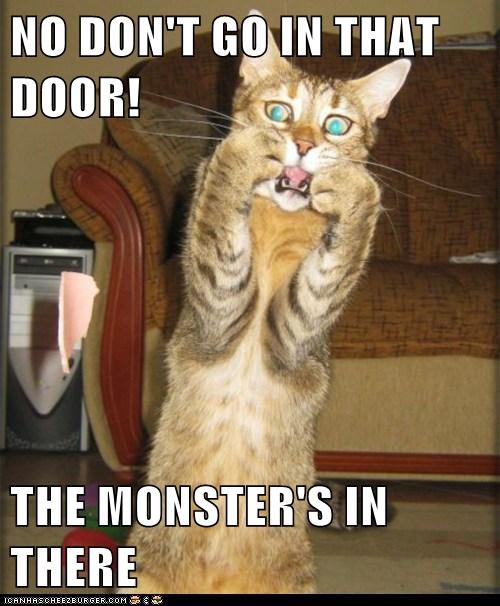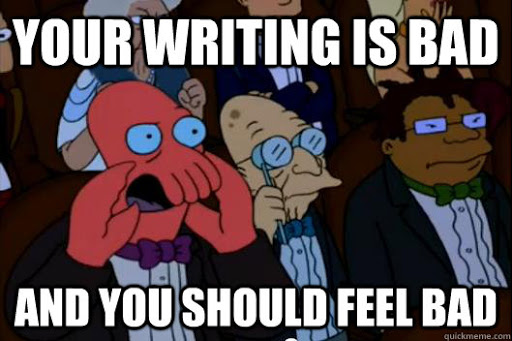Have you ever read a book or watched a movie that was generally entertaining, but was completely ruined by the main character who made really dumb decisions? Like in a horror movie where you shout at the screen, “Don’t go in that dark room, dummy! Get out of the house!”

If you’re a writer of fiction or non-fiction, you must be fully aware of when your readers will agree with your protagonist’s decisions, and when they might not.
Often in fiction, characters act impulsively or make bad decisions and this moves the plot ahead. As an author, you may well want your character to make a bad choice. If the character is supposed to be a dope who makes lousy decisions, then it’s fitting that they go into that dark room where the monster is obviously hiding.
However, if your character is supposed to be clever (or at least rational) but makes out-of-character choices that are so brainless as to be unforgivable, that can be a big turn-off for readers.
Shawn Coyne, developer of the Story Grid, maintains that in every scene, chapter, and plot arc characters must make either 1) the best worst choice, or 2) must choose between irreconcilable goods.
According to Coyne, the character should pretty much constantly be making decisions. High-stakes choices, low-stakes choices, and everything in between. If a character chooses inaction, that is a choice, too.
Readers don’t need to see the character’s decision making process 100% of the time. That would probably be an exhausting piece of fiction to get through. But as writers, we should have some sense (even if it doesn’t show up on the page) of why our characters make the decisions they do. If we don’t, the reader may feel like the author is pushing the characters around like pieces on a checkers board–and when that happens, readers will put the book down. Or worse…

Recently I read Decisive by Dan and Chip Heath. It’s a great self-improvement book about how we can make better decisions in our real lives. But as is my tendency when I read these types of books, I found myself thinking about how these principles apply to fiction.
So I thought I’d extrapolate a few thoughts about what writers might be able to get out of their arguments.

WRAP Framework
In the book, the authors’ main tool is the WRAP Framework, which is a mnemonic for: Widen Your Options, Reality-Test Your Assumptions, Attain Distance Before Deciding, and Prepare to Be Wrong. So when you’re facing a decision of any importance that makes you stop and consider your options, it’s helpful to consider these strategies.
This just good advice. But applying it to fiction, I found myself looking at it from two different angles. 1) How could I show in more detail how my characters make decisions? and 2) How can I make better plotting, character-building, or world-building decisions? I’ve kind of intermingled these two angles in the questions listed below.
When Your Character is in Action, or in a Situation that Requires a Decision…
(These questions are relevant to scenes where your character is in the midst of some kind of active struggle with an external force, either natural or interpersonal.)
- How would character react if they considered what they stood to lose by NOT acting in a certain way?
- As you paint your character into a corner, consider how taking away their options might heighten tension in the scene.
- Show your character thinking AND not OR.
- If your character being reactive in solving a problem, how can they be proactive in finding a solution to that problem? (Proactive characters are a billion times more interesting than passive or reactive characters.)
- If your character is being proactive, facing difficulty due to their own ambition, how do they react to unexpected difficulties that arise?
- How might your character become aware that they are over-confident?
- How would your character react to a plan that fails because of over-confidence?
- How can your character fail spectacularly?
- How could failure push your character to the next level?
- If your character needs to be shown doing something, but it’s not time for the climax, could you show them gathering more options or information?
When Your Character is Planning, How Might they Widen Their Options?
(These questions may make more sense to consider when your character is not in a crisis situation, but planning or trying to puzzle through their options.)
- When faced with a problem, or cornered by an avalanche of mounting difficulties, how could your character expand their options?
- Could your character find someone who has already solved the problem at hand?
- How might your character have blind spots due to confirmation bias? What might cause your character to realize the existence of those blind spots?
- How could your character test their own assumptions by considering the opposite of what they assume? (If they assume they can pick a lock to rob a safe, might they consider a plan B if they can not pick it?)
- How could your character do research to establish a base rate of information about the problem?
- How could your character dip a toe into the plan or project they are considering? Have them test the waters before diving in.
- Have your character consider the fallout of a given decision 10 minutes from now, 10 months from now, and 10 years from now (doesn’t have to be so rigid, the point is to illustrate the character’s interpretation of the immediate vs long-term payoff of a decision).
- Show character reminding themselves of their core priorities.
- Show character mindfully ignoring lesser priorities.
Decision Fatigue
There are probably a hundred million other ways to show characters puzzling through the many possibilities that face them at any given moment, but hopefully the above will jog your creativity and help you get to know your characters better if nothing else.
That said, the caveat to thinking in-depth about how your characters make decisions is this: the reader doesn’t need to be on the inside of every little decision made by your character. As I mentioned before, this is something that is chiefly relevant for you, the author, to help you better understand your characters as you flesh them out. How you show your character’s interior process will depend on your own vision for your story and the conventions for the genre in which you’re writing.
Hopefully this provides some helpful grist for the mill as you develop your characters. Happy writing!


